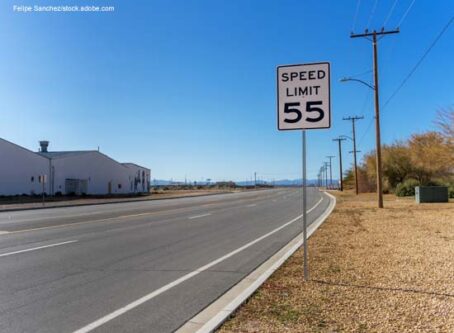Study suggests stronger cellphone laws reduce rear-end crashes
Strengthening cellphone laws may reduce rear-end crash rates, according to a recent study conducted by the Insurance Institute for Highway Safety.
In a study titled “The association between strengthened cellphone laws and police-reported rear-end crash rates,” the Insurance Institute for Highway Safety looked at three states that strengthened their respective cellphone laws and whether there was a reduction in rear-end crashes. Two of the three states experienced such a reduction.
The study compared the change in monthly per capita rear-end crash rates in California, Oregon and Washington before and after the cellphone law changes relative to the rates in two control states, Colorado and Idaho. Analyses examined rear-end crashes with injuries in all three study states, including minor to fatal injuries.
The study also examined rear-end crashes of all severities in California and Washington, including property-damage-only crashes and crashes with injuries. Oregon was excluded from this analysis because of a 2018 change to its reporting criteria for property-damage-only crashes.
The time frame of the study is from 2015 through 2019. All three states enacted stronger cellphone laws in 2017.
According to the study, Washington’s strengthened cellphone law was associated with a 7.6% reduction in the rate of monthly rear-end crashes of all severities relative to the rates in the control states.
The law changes in Oregon and Washington were associated with significant reductions of 8.8% and 10.9%, respectively, in the rates of monthly rear-end crashes with injury relative to the rates in the control states.
However, California did not experience changes in rear-end crash rates of all severities or with injuries associated with the strengthened law.
“The current evaluation of strengthened cellphone bans in California, Oregon, and Washington found that the strategy of comprehensively banning visual-manual cellphone use was associated with significantly lower rates of rear-end crashes in two of the three study states relative to the control states,” the study states.
Addressing the discrepancy with California’s results, the Insurance Institute for Highway Safety posited it may come down to the wording of the cellphone laws.
“As hypothesized by Zhu and colleagues (2021), the use of plain, direct language to ban all handheld cellphone use, including holding a phone, and to close loopholes used to successfully contest citations under the earlier laws may boost driver compliance through increased understanding or perceived likelihood of being cited, and it may improve law enforcement officers’ willingness to cite due to the facility of identifying infractions or belief that a citation is less likely to be dismissed in court,” the study stated.
According to the study, drivers who are holding a phone but otherwise are not using it are violating the law in Oregon and Washington but are following California’s law. Oregon and Washington define “driving” to include operating a vehicle on a highway even while the vehicle is temporarily stopped due to traffic, a traffic control device, or other delays. California’s law does not explicitly state whether driving includes stopped conditions. LL









